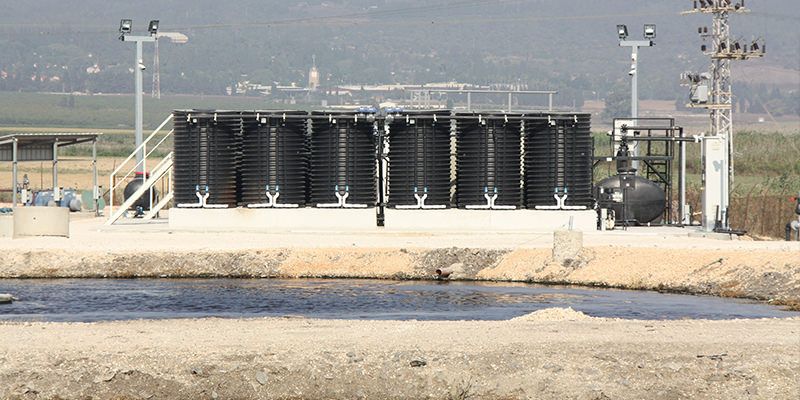MABR: A Wastewater Treatment Technology for the Future
Published on by Michal Rosenzweig, Previous Marketing Manager Fluence in Technology
Membrane aerated biofilm Reactor (MABR) technology provides a revolutionary improvement in aerobic wastewater treatment for a number of reasons, particularly its high energy efficiency and increased treatment capacity, compared to traditional wastewater treatment systems.
Much of the energy used in aerobic treatment is tied to aeration, the introduction of air bubbles into wastewater via pumps, paddles, and other mechanisms to feed the aerobic bacteria that digest waste. Aeration can be very inefficient.

Fluence’s first municipal installation of MABR was at a small dairy farming community in Israel. The treated effluent meets all quality standards and is suitable for agricultural reuse.
Fluence’s Innovation Advisor Eytan Levy told Sharon Udasin of The Jerusalem Postthat wastewater treatment “is a massive energy consumer […] We’re trying to find technological ways to minimize this power consumption.”
MABR represents one such technological breakthrough. MABR systems passively circulate oxygen through a spirally wound membrane at atmospheric pressure. MABR’s self-respiring membrane allows bacteria to consume oxygen more readily for a 90% reduction in energy used for aeration.
What’s more, the membrane surface quickly accumulates a biofilm of bacteria that establishes a simultaneous nitrification-denitrification (SND) process to produce a high-quality, low-nitrogen effluent suitable for reuse in irrigation. The MABR process is low-maintenance. All of these advantages add to an overall reduction in energy use.
Read full article: Fluence
Media
Taxonomy
- Biological Treatment
- Decentralized Wastewater
- Waste Water Treatments
- Wastewater Treatment
3 Comments
-
Very good!
We represent a simple aerated technology used as a biocleaner that can save 50% and more in electricity and operation cost of the system, digesting sludge in the same tank if it is well designed and used.
You can contact to me to my LinkedIn profile if interested. -
149/5000
Предлагаю инновационный метод! Очистка любви стока. Очистка делает вождение рыбохозяйственного назначения. Не химия, не биология.Только физические процессы.
Я предлагаю новаторский метод! Очистка любого слива. Очистка до промысловой воды. Не химия, не биология. Только физические процессы. -
I propose an innovative method! Cleaning of any drain. Cleaning up to fishery water. Not chemistry, not Biology. Only fizzy processes.